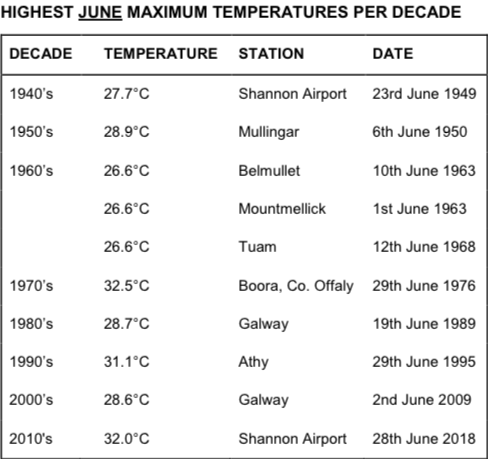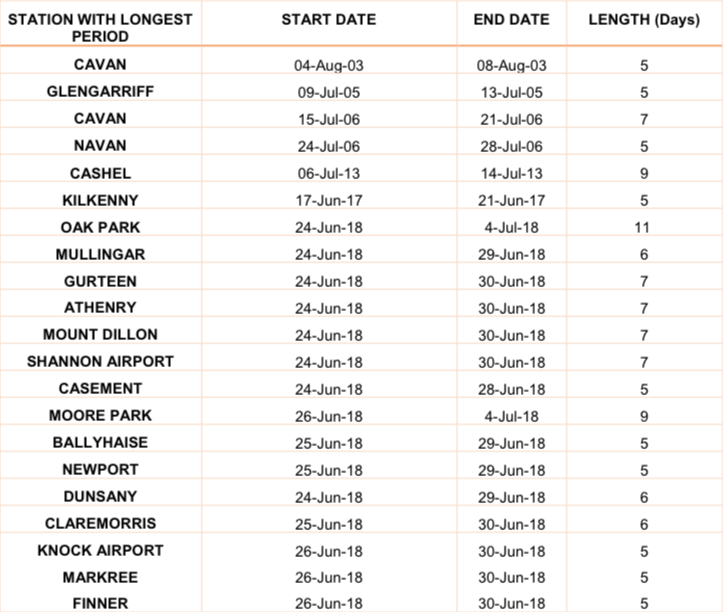These were the hottest places in Ireland…
We’re back to the rain and frankly, although we loved the gorgeous weather, we imagine the farming community is breathing a collective sigh of relief as soil moisture deficits reached alarming levels.
The country experienced high temperatures and drought conditions, particularly in the south and east of the country, in June and July.
According to Met Éireann: “On 21 June, an intense area of high pressure of was centred to the west of Ireland bringing a northwesterly air flow across Ireland.
“In the days that followed, an easterly airflow dominated our weather. It brought the warmest conditions, with the highest maximum temperature of 32.0 degrees recorded at Shannon Airport, Co Clare (13.7 degrees above its LTA) on the 28 June.”
This is the hottest temperature recorded in Ireland this year.
On the June 27, Shannon Airport recorded 30.8 degrees and Mount Dillon, Roscommon recorded 30.5 degrees. On June 28, 30.3 degrees was recorded at Mount Dillon, Roscommon , 30.2 degrees was recorded at both Claremorris, Mayo and at Athenry, Galway and 30.1 degrees recorded at Moore Park, Cork.

Met Éireann define a heat wave as when there are five consecutive days or more with maximum temperature over 25 degrees.
Official heat waves were recorded at fifteen stations this year by Met Éireann.

Over three days in June, 27, 28 and 29, five stations in counties Clare, Tipperary, Roscommon, Galway and Mayo recorded maximum screen air temperatures over 30 degrees.
Rainfall for June and July was also down dramatically on monthly averages. Phoenix Park recorded its lowest combined two-monthly rainfall total of 34.5 mm for June and July since records began in 1850.
Is this extreme weather for Ireland the result of climate change? Well, the answer to that isn’t straight forward according to Met Éireann.
While it’s not possible to directly attribute June and July directly to climate change, they are compatible with the general long-term trend due to rising concentrations of greenhouse gases.
LISTEN: You Must Be Jokin’ with Aideen McQueen – Faith healers, Coolock craic and Gigging as Gaeilge
RELATED ARTICLES






MORE FROM JOE
























MORE FROM JOE


























